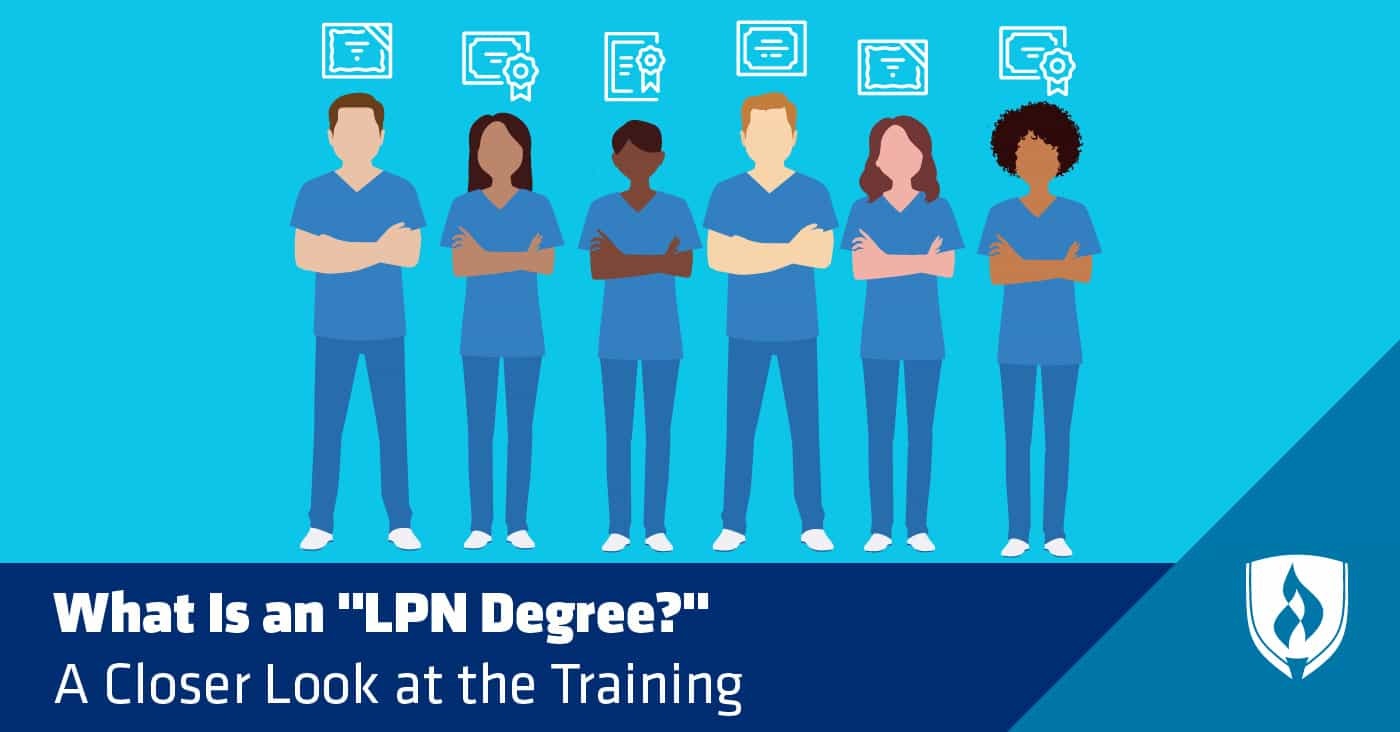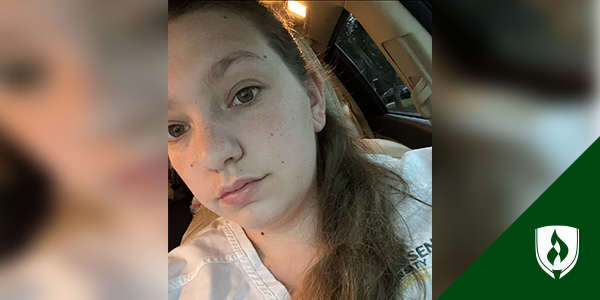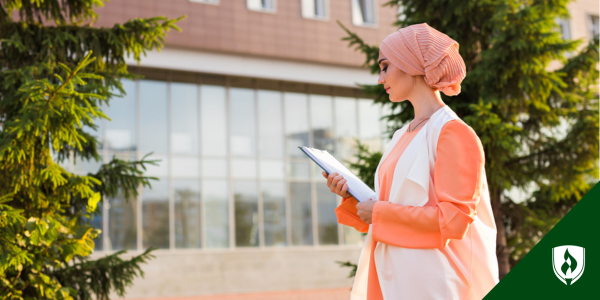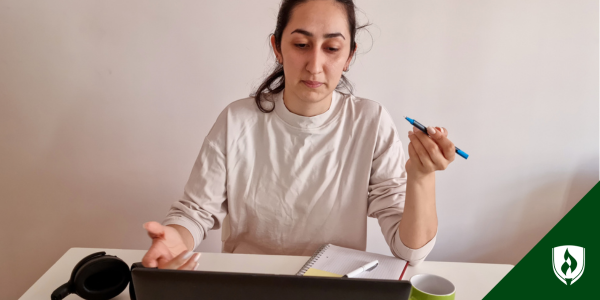
You thought your career path was clear when you decided you wanted to become a nurse. But it only took a few quick searches to discover that nursing education programs and credentials aren’t as straightforward as you might have thought.
We get it. The education options for aspiring nurses aren’t exactly simple to understand. You’ve heard plenty about RNs, but you’re probably less familiar with the LPN education and career path. So what does it really take to become an LPN? Is there an “LPN degree”—or what should you be looking for?
We’re decoding the LPN education and career path so you can see how this career compares to other nursing roles—and understand the training required to land an LPN job. Keep reading to learn what to expect as a licensed practical nurse and how to become one.
Get Your Nursing School Questions Answered at a Nursing Information Session
What is an LPN?
Licensed practical nurses (LPNs)—also called “licensed vocational nurses” in some states—perform many of the job duties you think of when you picture a nurse. They take vital signs like blood pressure and heart rate, help patients with basic care like bathing and dressing and assist with tests and procedures. Through it all, they also maintain accurate patient records and discuss patients’ healthcare concerns or questions.
LPNs perform these duties under the supervision of doctors or registered nurses, although this supervision looks different depending on where they practice. Some states may limit which tasks an LPN can carry out, such as starting an IV line or giving medication. Others allow LPNs more freedom, giving veteran LPNs the opportunity to supervise licensed practical nurses who have less experience under their belts.
LPNs can also expect to work in many of the same healthcare facilities as RNs. The Bureau of Labor Statistics (BLS) reports that 38 percent work in nursing homes or long-term care facilities.1 LPNs can also care for patients in clinics, home health services and hospitals. As with most nursing careers, LPNs have some flexibility with their hours. Patient care is needed at all hours of the day, so LPNs can choose to work nights, weekends and holidays if that’s a better fit for their schedule than the usual nine-to-five.
LPN education: Degree or Diploma?
One thing you should know right away is that the phrase “LPN degree” is a common misnomer. While it might be used as casual shorthand, you should know LPNs don’t typically need an associate’s degree to get started in their nursing career. Instead, they’re typically prepared for the role through a certificate or diploma program like Rasmussen College’s Practical Nursing Diploma, which can be completed in as few as 12 months.2
All states also require aspiring LPNs to pass the National Council Licensure Exam for Practical Nurses (NCLEX-PN) to become licensed. This is a rigorous test, but a high-quality practical nursing diploma program will prepare you for it.
What will I learn in a Practical Nursing Diploma program?
Earning your scrubs and beginning your nursing career sooner rather than later certainly sounds like a good plan. But what will you actually learn in an LPN diploma program? Let’s walk through the skills, courses and clinical experience you’ll gain.
LPN skills
Nurses at all levels need a variety of soft skills that help them effectively connect and communicate with patients. Critical thinking, communication and working well with others are all necessary traits for LPNs, according to ONET.
These transferable skills and others—such as digital fluency, information literacy and ethics and professional responsibility—are a specific focus of the Practical Nursing Diploma program at Rasmussen College. Soft skills like these allow LPNs to contribute to an evidence-based, therapeutic environment and choose safe, effective interventions for their patients.
Of course, technical skills are also an important part of the field. LPNs can expect to learn the process of taking basic vital signs, understanding standard safety precautions, accurately calculating medication and providing an emergency response.
LPN courses
These aren’t skills you’ll be expected to pick up on your own! Rasmussen College’s Practical Nursing Diploma courses are designed to provide aspiring LPNs with the knowledge and skills they need to pass the NCLEX-PN exam and work with patients in the field.
Here are just a few of the courses you can expect to see on the LPN track:
- Structure and Function of the Human Body: Students will gain a working knowledge of the human body, including tissues and cells and the anatomy and physiology of the skeletal and muscular systems. You’ll also complete an introductory study of the body systems, including the nervous, digestive and cardiovascular systems.
- Introduction to Nursing: Here, students gain a basic understanding of nursing theory, standards of care and medical terminology.
- Client-Centered Care I, II, III, and IV: These four courses build upon one another to teach students how to apply theoretical knowledge in real-life healthcare settings, including caring for patients with various disorders or other health needs. These courses also include a clinical component.
- Principles of Pharmacology: Students are given a foundation of knowledge related to major drug classifications and how medications affect the body. They explore how to safely administer medication, including legal, ethical and professional considerations.
- Principles of Mental Health Nursing: This course prepares students to care for patients with mental health concerns, including crisis management interventions. This course also covers caring for patients with substance abuse or addictive disorders.
LPN clinical experience
There’s only so much you can do with the knowledge of nursing without taking it into the field for real-life experience. Many of Rasmussen College’s Practical Nursing Diploma courses include a clinical component that allows students to gain hands-on experience with qualified professionals.
With extensive clinical training that fits into your schedule, you can rest assured that you’ll be prepared to care for patients as a licensed practical nurse.
Take the next step to become an LPN
Now that this article has cleared up the confusion around nursing credentials, you no longer have to wonder, “What is an LPN degree?”
Now it’s time to take the first step toward becoming an LPN: finding the right LPN education program for you. Get started by checking out the Rasmussen University Practical Nursing Diploma program!
1Bureau of Labor Statistics, U.S. Department of Labor, Occupational Outlook Handbook, [accessed September, 2020] www.bls.gov/ooh/. Information represents national, averaged data for the occupations listed and includes workers at all levels of education and experience. This data does not represent starting salaries. Employment conditions in your area may vary.
2Completion time is dependent on the number of transfer credits accepted and the number of courses completed each term.




